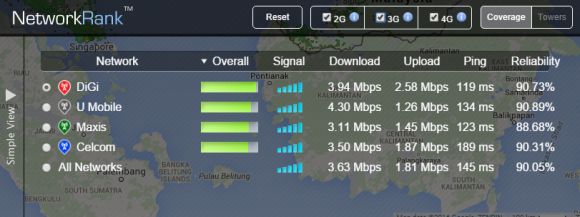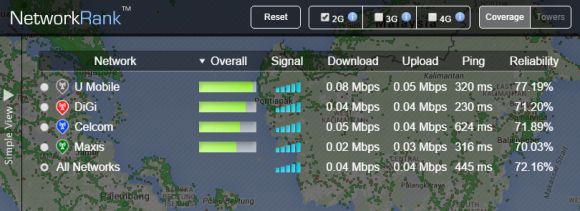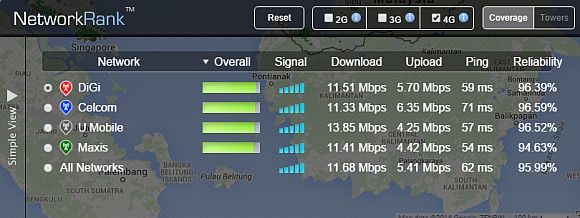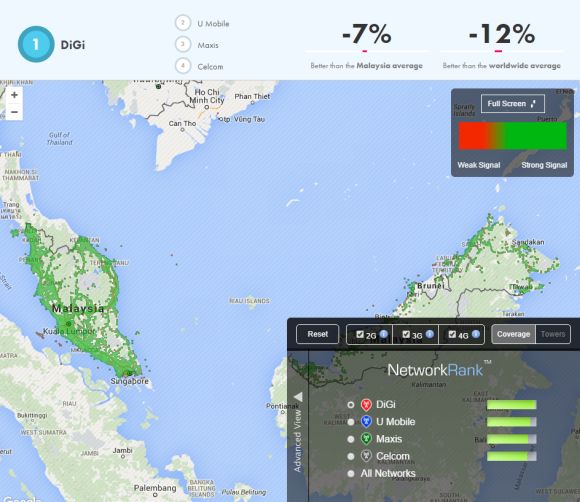Towards the end of 2015, our Malaysian telcos have been fighting over who has the widest 4G coverage. If you think about it, it is like having a bunch of guys boasting about their own manhood. Everyone claims to have the longest but nobody can actually verify it.
According to OpenSignal’s latest data updated on 11 March 2016, Digi currently has the widest coverage in Malaysia. So looks like it’s a win for team yellow as it claims to currently cover 72% population with 4G LTE.
But is this really true?
When you view the OpenSource website, you should see a map which plots the coverage areas of the telcos around you. To get a nationwide sample, you can key in Malaysia from the search bar.
Malaysia Mobile Overall – 2G/3G/4G

If you enable all 2G, 3G and 4G, Digi is ranked #1, followed by U Mobile, Maxis and Celcom. If you look at speed alone, U Mobile does seem to offer the fastest speeds here which goes in line with its “fastest mobile network” title from Speedtest.net.
Malaysia – 2G only

You probably thought Celcom would have the widest 2G network in the country but it isn’t, according to OpenSignal. When we toggle the map to 2G only, U Mobile suddenly ranks #1 while Maxis takes last position at #4. The funny thing is that U Mobile doesn’t even own a 2G network. For areas that are out of U Mobile’s coverage, it relies on Maxis 2G and 3G networks as part of their RAN sharing agreement.
Malaysia – 4G only

For 4G only, Digi is ranked first, followed by Celcom then U Mobile and Maxis. U Mobile which doesn’t even cover East Malaysia is ranked higher than Maxis for coverage. Very odd indeed.
So what does this tell us? Looking at the above, it seems that OpenSignal may not be entirely accurate for Malaysia at the time being. It collects mobile quality data from their OpenSignal app that’s available for Android and iOS. Even OpenSignal themselves urge you to install the app in order to improve the maps. Think about how many Malaysians have installed the app? Most of you would have use Speedtest.net instead.
When OpenSignal published its State of LTE report, it was derived from a sample size of 325,221 users. Out of those numbers, we won’t know how many of them are from Malaysia.
Having crowd source data is good but the report is only going to be as good as the sample size itself. So if you want to contribute to better stats on network quality, perhaps it is time to give OpenSignal a try. This could work if OpenSignal becomes as popular as crowdsourcing GPS app Waze in Malaysia.
We’ve said it a number of times before, all that widest coverage claims doesn’t matter to consumers when there are still areas with blackspots and poor mobile internet connectivity. What do you think? You can view the OpenSignal rankings for Malaysia over here.
Thanks @_ravind for the tip!







